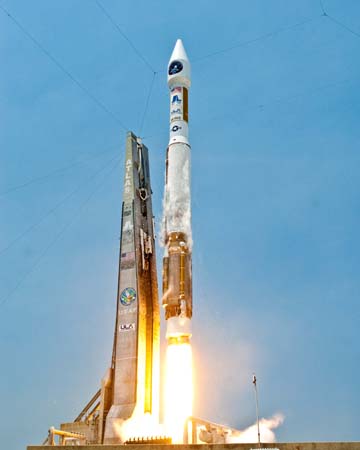The  Air Force and its industry partners successfully launched, GEO-1, the first Space Based Infrared System geosynchronous satellite, into orbit from Cape Canaveral AFS, Fla. A United Launch Alliance Atlas V booster carried the Lockheed Martin-built missile warning satellite aloft. “Today, we launched the next generation missile warning capability,” said Gen. William Shelton, Air Force Space Command commander, of the May 7 mission. “It’s taken a lot of hard work by the government-industry team and we couldn’t be more proud. We look forward to this satellite providing superb capabilities for many years to come.” GEO-1 features highly sophisticated scanning and staring sensors designed to provide enhanced early warning of missile launches worldwide as well as ancillary roles like supporting missile defense engagements. GEO-1 will complement legacy Defense Support Program warning satellites on orbit. It joins two SBIRS staring sensors already operating on classified intelligence satellites. Northrop Grumman supplies the SBIRS sensors. (Cape Canaveral release) (Lockheed release)
Air Force and its industry partners successfully launched, GEO-1, the first Space Based Infrared System geosynchronous satellite, into orbit from Cape Canaveral AFS, Fla. A United Launch Alliance Atlas V booster carried the Lockheed Martin-built missile warning satellite aloft. “Today, we launched the next generation missile warning capability,” said Gen. William Shelton, Air Force Space Command commander, of the May 7 mission. “It’s taken a lot of hard work by the government-industry team and we couldn’t be more proud. We look forward to this satellite providing superb capabilities for many years to come.” GEO-1 features highly sophisticated scanning and staring sensors designed to provide enhanced early warning of missile launches worldwide as well as ancillary roles like supporting missile defense engagements. GEO-1 will complement legacy Defense Support Program warning satellites on orbit. It joins two SBIRS staring sensors already operating on classified intelligence satellites. Northrop Grumman supplies the SBIRS sensors. (Cape Canaveral release) (Lockheed release)
The Air Force is requesting about $141 million for initial enlistment bonuses in its fiscal 2026 budget, while Space Force wants $13 million.
